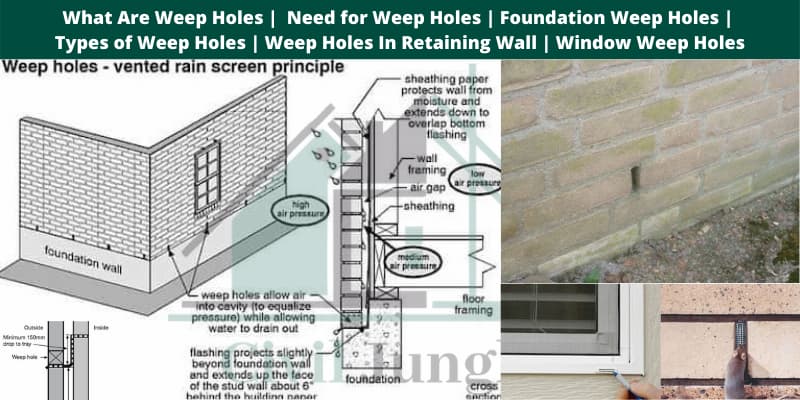
Introduction of Weep Holes
Water is the biggest enemy of this structure. It is necessary to remove water from the structure as far as possible to prevent it from any further damages. There are many chances of entering water into the structure but the weep holes function is to pass water through it outside the structure.
Weep holes are a small opening that is in a rectangular or circular shape that allows water to drain through it.
Weep holes are mostly provided in the wing walls retaining walls masonry walls extra to remove water through it. In this article you will get to know about weep holes and its importance.
What Are Weep Holes?
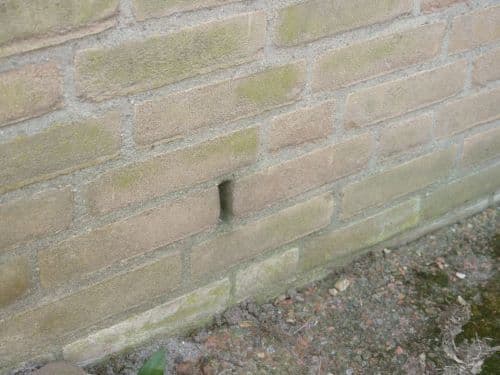
Weep holes are the small opening which is in a circular or rectangular shape to escape rainwater from the building.
Weep holes help to reduce the buoyancy and uplift on the structure and make it structurally strong and stable. The weep holes should be sized properly to overcome the surface tension.
The weep holes are generally provided by using sand drains which will help in the proper functioning of the Weep holes. The number of peoples which is provided in the structure depends upon the size and the length of the structure and height of the water table in that area.
Need for Weep Holes
When the structure is constructed above the water table then there will be no chance of accumulation of water behind the wall. In this case, there is no need for the provision of weep holes.
But if the structure is constructed below the water table then there will be extra pressure of water will be developed on the structure and it is necessary to provide weep holes to pass water through it.
The weep holes are the small openings that are provided mostly in the retaining walls, wing walls, external brick walls, underpasses, Bridge to remove the hydrostatic pressure which is developed.
Weep Holes Definition
Weep hole is the small opening provided in the structure to drain off the rainwater through it and reduce the hydrostatic pressure on the structure and prevent it from Structural damage.
The height at which the weep holes are provided depends upon the maximum height of the water accumulation of the groundwater table in that area.
Where Should Be Weep Holes Provide?
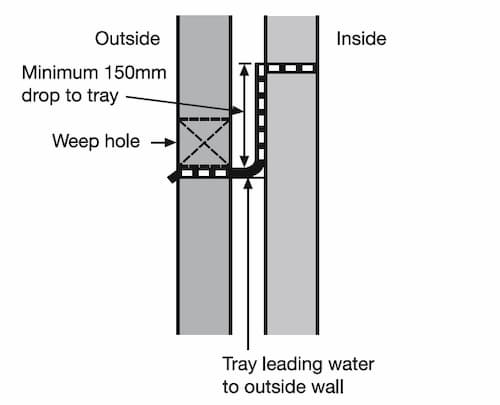
According to the principle of gravity, the water escapes from the lowest point of the structure. That’s why the weep holes are always provided at the bottom of the retaining walls for the masonry walls.
Weep holes are also provided above the door and below the windows. Weep holes that are provided in the brick masonry walls also helpful in the ventilation to allow air to the back of the wall.
Foundation Weep Holes

Foundation is one of the most important parts of the structure which translates the total of the structure into the underneath strata. There are different ways from which the water enters into the basement of the foundation of the structure.
There are many ways from which water enters into the building and the foundation of the structure. If the rainwater gets infiltrate in the foundation of the structure then it will cause the failure of the foundation and structural damage.
To prevent these damages it is very necessary to provide foundation weep holes which help to escape water from the building.
Types of Weep Holes
There are different types of weep holes which are categorized according to their uses
- Open Head Joint Weep Holes
- Cotton Rope Wicking Weep Holes
- Tubes Weep Holes
- Corrugated Channels
#1. Open Head Joint Weep Holes
- Open head joint peoples are provided by Living out water from the joints. These types of weep holes are open holes of the same size as the typical spacing of the joints.
- The open head joint process is one of the common and effective methods which are used to evaporate water from the cavity. Depressing which is provided between the open hip joint weep holes is 24 inches.
#2. Cotton Rope Wicking Weep Holes
- Cotton rope wicking weep holes are formed by using the rope of 12 inches in length. This type of weep holes are placed in the joints and the other end is extended to the cavity wall.
- The water from the back of the wall is absorbed by the Cotton and on the other side, it gets evaporated. This process is low as compared to other types of weep holes.
#3. Tubes Weep Holes
- Tube wells are formed with the help of hollow plastic or metal tubes which are spaced around 16 inches from each other. The Tube weep holes are installed at a slight angle to allow water to drip out easily and care should be taken that the angle should not be too steep.
- Sometimes a Shallow layer of gravel is laid to prevent the water from dropping from the blockage of the tube weep holes.
#4. Corrugated Channels
Corrugated channels are the latest technology in the weep holes which helps to quickly drain off water from the multiple channels. It is installed at the bottom side of the bed joint of the mortar.
Weep Holes In Retaining Wall
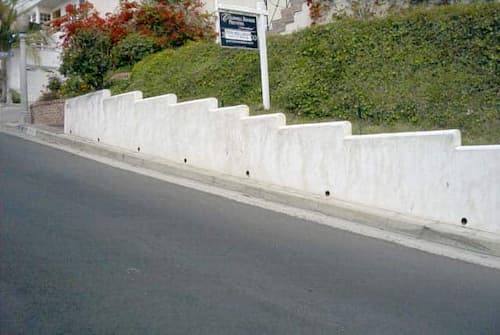
- Weep holes are provided at the bottom of the retaining walls which have to remove the hydrostatic pressure which is developed.
- Weep holes are small openings that are in a circular or square shape. Weep holes play a crucial role in the retaining wall to drain water from the retaining wall and decrease the hydrostatic pressure on the walls.
- Weep holes in the retaining wall prevents the damage of the wall and dampness on the wall. Weep holes in the retaining wall main consist of clay, plastic, or the metal pipe which is extending through the retaining wall to the layer of porous backfill.
Functions of Weep Holes in Retaining Walls
There are various functions of weep holes in a retaining wall which is given below
- The main function of providing weep holes in the retaining walls is to reduce the hydrostatic pressure which is developed in the retaining wall.
- Weep holes in the retaining wall help to drain the rainwater out of the retaining wall.
- Weep holes are provided at the bottom side of the retaining wall which allows water to drain from the water lodge on the retaining wall.
- Weep holes in the retaining wall help to reduce the buoyancy and uplift on the structure and make it structurally strong and stable.
- Weep holes in the retaining walls help to prevent any further damages in the retaining wall.
- Weep holes protect the retaining wall from dampness.
- Weep holes also serve the most important purpose of ventilation in the retaining walls.
Need of Weep Holes In Retaining Wall
It is very necessary to provide weep holes in the retaining walls at regular intervals. If the retaining wall is constructed above the water table then there is no need of providing weep holes because the water will not collect behind the wall.
When the retaining wall is constructed below the water table when the unit weight of the soil will be considered as the submerged weight of soil. In this case, it is necessary to provide weep holes in the retaining walls which will help to reduce the hydrostatic pressure on the walls.
Window Weep Holes
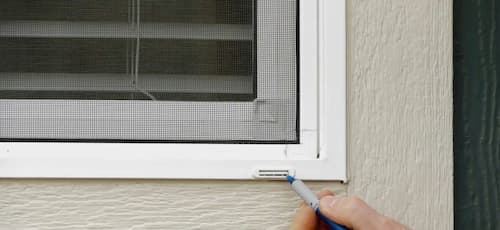
- The window peoples are provided on the bottom side of these window frames. The window peoples act as a drainage system for your Windows.
- If the window weeps holes not draining properly then there may be chances of any blockage due to debris, paint, or any other element. It is very necessary to regularly maintain the window weep holes for its efficient functioning. Weep holes in shower are also provided to drain out water through it.
- Check window weep holes at least once a year before the rainy season. If the window weep holes are blocked then open them with the brush or screwdriver and clean it properly.
- If there are no weep holes is provided in the windows then you can install weep holes in windows at your home. You can make some holes with a drill into the window frame at the bottom side which will help to drain out rainwater and acts as a weep hole.
- when the weep holes are constructed in the brick masonry, the mortar between the successive courses of the brickwork may drop down in the weep holes which can cause the blockage of the weep holes. It is necessary to regularly maintain and clean the weep holes in Brickwork for its proper functioning.
- Weep holes are small opening which can provide access to the insects and small rodents. This can also block the weep holes to prevent this problem baffled vents are installed.
FAQ on Weep Holes
What Are Weep Holes?
Weep holes are small openings, typically circular or rectangular, designed to allow water to drain out from behind walls or structures, reducing hydrostatic pressure and preventing water damage.
Why Are Weep Holes Important?
Weep holes are crucial for preventing water accumulation behind walls and structures, which can lead to hydrostatic pressure, structural damage, and dampness. They help maintain the stability and integrity of buildings.
Where Should Weep Holes Be Installed?
Weep holes should be installed at the lowest points of retaining walls, masonry walls, foundations, and other structures where water accumulation is a concern. They are also placed above doors and below windows in some cases.
What Types of Weep Holes Are There?
Common types of weep holes include:
- Open Head Joint Weep Holes: Openings in the mortar joints that allow water to escape.
- Cotton Rope Wicking Weep Holes: Ropes that absorb and wick water from the wall cavity.
- Tube Weep Holes: Hollow tubes, often made of plastic or metal, installed to channel water out.
- Corrugated Channels: Channels installed to quickly drain water through multiple pathways.
How Are Weep Holes Maintained?
Regular maintenance involves checking and cleaning weep holes to ensure they are not blocked by debris, mortar, or other materials. It is important to clear any obstructions to maintain their effectiveness.
How Often Should Weep Holes Be Inspected?
Weep holes should be inspected at least once a year, ideally before the rainy season, to ensure they are functioning properly and to address any potential blockages.
Can Weep Holes Be Installed in Existing Structures?
Yes, weep holes can be retrofitted into existing structures. For windows, for instance, holes can be drilled into the bottom of the window frames to allow for drainage.
What Problems Can Arise from Blocked Weep Holes?
Blocked weep holes can lead to water accumulation, increased hydrostatic pressure, structural damage, and dampness. In severe cases, this can compromise the integrity of the building.
Are There Any Preventive Measures for Weep Holes?
To prevent blockages, baffled vents can be installed to keep out insects and rodents. Regular cleaning and maintenance are also crucial to ensure proper drainage.
How Do Weep Holes Contribute to the Longevity of a Structure?
By preventing water accumulation and reducing hydrostatic pressure, weep holes help maintain the structural integrity of a building, preventing potential damage and extending the lifespan of the structure.

